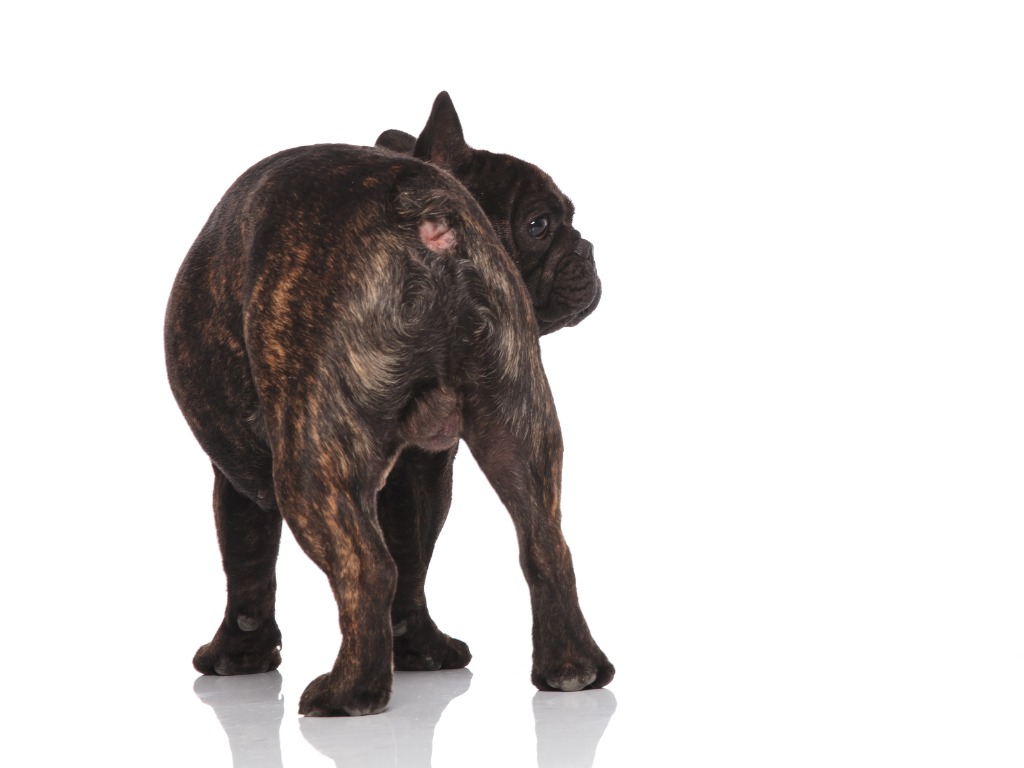Are French Bulldogs’ Tails Docked? Everything You Need to Know
French bulldogs are a popular breed of dog known for their unique appearance and affectionate personality. One aspect of their appearance that has been debated is their tail. Some people believe French bulldogs should have their tails docked, while others argue that it is unnecessary and harmful to the dog.


Docking is removing part or all of a dog’s tail. Historically, it was done for practical reasons such as preventing injury while hunting or working. However, in modern times, it is often done for cosmetic reasons. In some countries like the United Kingdom, docking is illegal except for certain working breeds. There are no federal laws regulating docking in the United States, but some states have their own laws or restrictions.
So, are French bulldogs tails docked? The answer is not straightforward. While it is not a standard practice in the breed, some breeders and owners may choose to dock their French bulldog’s tail for cosmetic reasons. However, it is important to note that docking can negatively affect a dog’s health and behavior, and should only be done for medical reasons by a licensed veterinarian.
Table of Contents
French Bulldogs and Their Tails
The History of Docking French Bulldog Tails
Docking is the practice of removing a portion of an animal’s tail. Historically, French Bulldogs’ tails were docked for practical reasons, such as preventing injuries to working dogs. This practice was also believed to improve the dog’s appearance and make them look more alert.
However, tail docking is now banned in many countries as it is considered a cruel and unnecessary. In the United States, tail docking is still allowed for certain breeds, but it is becoming less common.
The Breed Standard for French Bulldog Tails
According to the American Kennel Club (AKC) breed standard for French Bulldogs, the tail should be “short, hung low, thick at the root and tapering quickly towards the tip.” It should also be “undocked, straight or screwed (but not curly), short, hung low, thick root and fine tip.”
The breed standard does not require tail docking; in fact, docked tails are considered a disqualification in the show ring. However, some breeders may still choose to dock their French Bulldogs’ tails for personal or cosmetic reasons.
It is important to note that tail docking can have negative health consequences for dogs, including pain, infection, and changes in balance and communication. As a result, many animal welfare organizations and veterinarians oppose the practice.
While tail docking was once a common practice for French Bulldogs, it is no longer necessary or recommended. The breed standard does not require it and can have negative health consequences for dogs.


The Docking Procedure
How is a French Bulldog’s Tail Docked?
Tail docking is a procedure in which a portion of a dog’s tail is surgically removed. The procedure is usually done when the puppy is only a few days old. For French Bulldogs, the procedure involves cutting off the tail at the base, leaving only a short stump.
When is a French Bulldog’s Tail Docked?
Tail docking is often done for cosmetic reasons, and it has been a traditional practice for certain breeds, including French Bulldogs. However, in many countries, tail docking is illegal; in others, it is only allowed for medical reasons.
Is Tail Docking Painful for French Bulldogs?
Tail docking is a painful procedure, usually done without anesthesia. The puppies may experience discomfort and pain during and after the procedure.
What are the Risks of Tail Docking?
Tail docking can cause various health problems for French Bulldogs, including infection, bleeding, and nerve damage. Additionally, selective breeding for dogs with short tails can result in other health problems, such as spinal deformities and incontinence.
Tail docking is controversial, and many animal welfare organizations oppose it. If you are considering getting a French Bulldog, discussing the issue with a veterinarian and carefully considering the potential risks and benefits is important.
The Debate Over Tail Docking
Arguments For Tail Docking
Tail docking is a controversial topic in dog breeding, with advocates on both sides of the debate. Those favoring tail docking argue it is done for aesthetic or cosmetic reasons, as certain breeds are traditionally docked for their appearance. For example, French Bulldogs are often docked to achieve a specific look, although any kennel club does not require it.
Some breeders argue tail docking can prevent health issues such as incontinence or injury. In certain breeds, long tails can become a hindrance and cause discomfort or even injury to the dog. For example, Bulldogs with long tails can develop tail pockets that trap dirt and bacteria, leading to irritation and redness.
Arguments Against Tail Docking
Opponents of tail docking argue that it is unnecessary and can cause harm to the dog. Docking a dog’s tail involves cutting off a portion of the tail, which can be painful and traumatic. It can also lead to long-term health issues, such as spinal cord problems or nerve damage.
Additionally, many argue that tail docking is done purely for cosmetic reasons and does not benefit the dog. Some believe that the misconception that certain breeds require tail docking for health reasons is unfounded and not supported by evidence.
The debate over tail docking is complex and multifaceted. While some argue that it is necessary for certain breeds or health reasons, others believe it is unnecessary and can cause harm to the dog. It is important for breeders and dog owners to carefully consider the potential risks and benefits before deciding on whether or not to dock a dog’s tail.


Alternatives to Tail Docking
Tail Pocket Care
For French Bulldogs, tail pocket care is one alternative to tail docking. A tail pocket is a small aperture or fold located near the base of the tail. This area can collect dirt, debris, and moisture, leading to infections and inflammation. Owners should regularly clean and dry the area to prevent tail pocket infections. They can also use specialized products like tail pocket wipes or sprays to clean the area.
Selective Breeding
Selective breeding is another alternative to tail docking. Breeders can selectively breed French Bulldogs with shorter or no tails to avoid the need for docking. However, it’s important to note that this approach may not be suitable for all breeds or genetic conditions. Additionally, selective breeding takes time and effort, and it may not be possible to achieve the desired results quickly.
Cosmetic Tail Surgery
Cosmetic tail surgery is a third alternative to tail docking. This procedure involves reshaping the tail to achieve a shorter or more desirable shape. However, it’s important to note that this procedure has risks. Cosmetic tail surgery can be painful and may lead to complications like swelling, infections, or hemivertebrae (a genetic condition that affects the spinal column). Additionally, cosmetic tail surgery is not a suitable option for all dogs, and it should only be performed by a qualified and experienced veterinarian.
French Bulldog tails are typically short and fine, with little curves or a slight screw. While tail docking was once a common practice, it is now banned in many countries and considered unnecessary by many veterinarians. As an alternative, owners can consider tail pocket care, selective breeding, or cosmetic tail surgery to achieve the desired look for their French Bulldog.
Conclusion
French Bulldogs are a popular dog breed that has been around for centuries. One question that many people have is whether or not their tails are docked. Based on the available information, French Bulldogs are not typically docked.
While some breeds of dogs are commonly docked, such as Boxers and Doberman Pinschers, it does not seem to be a common practice for French Bulldogs. Many countries, including the United Kingdom and Australia, have banned tail docking.
